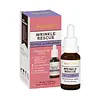What's inside
What's inside
 Key Ingredients
Key Ingredients

 Benefits
Benefits

 Concerns
Concerns

No concerns
 Ingredients Side-by-side
Ingredients Side-by-side

Centella Asiatica Extract
CleansingGlycerin
HumectantButylene Glycol
HumectantDipentaerythrityl Hexa C5-9 Acid Esters
Skin Conditioning1,2-Hexanediol
Skin ConditioningNiacinamide
SmoothingSqualane
EmollientWater
Skin ConditioningPolyglyceryl-3 Distearate
EmulsifyingCetearyl Alcohol
EmollientCaprylic/Capric Triglyceride
MaskingBetaine
HumectantButyrospermum Parkii Butter
Skin ConditioningHeptyl Undecylenate
EmollientLactobacillus/Centella Asiatica Extract Ferment Filtrate
Skin ConditioningGlyceryl Stearate
EmollientBakuchiol
AntimicrobialPanthenol
Skin ConditioningAcrylates/C10-30 Alkyl Acrylate Crosspolymer
Emulsion StabilisingPalmitic Acid
EmollientTromethamine
BufferingStearic Acid
CleansingGlyceryl Stearate Citrate
EmollientCarbomer
Emulsion StabilisingEthylhexylglycerin
Skin ConditioningAdenosine
Skin ConditioningMacadamia Ternifolia Seed Oil
EmollientSodium Phytate
Sodium Hyaluronate
HumectantHydrogenated Lecithin
EmulsifyingCeramide NP
Skin ConditioningGlyceryl Acrylate/Acrylic Acid Copolymer
HumectantDextrin
AbsorbentTheobroma Cacao Extract
Skin ConditioningPolyglyceryl-10 Myristate
Skin ConditioningPhytosphingosine
Skin ConditioningMadecassic Acid
Skin ConditioningAsiaticoside
AntioxidantHydrolyzed Extensin
Skin ConditioningSucrose Distearate
EmollientAsiatic Acid
Skin ConditioningLauric Acid
CleansingPhytosterols
Skin ConditioningHydrolyzed Hyaluronic Acid
HumectantCaprylyl Glycol
EmollientAcetyl Hexapeptide-8
HumectantCentella Asiatica Extract, Glycerin, Butylene Glycol, Dipentaerythrityl Hexa C5-9 Acid Esters, 1,2-Hexanediol, Niacinamide, Squalane, Water, Polyglyceryl-3 Distearate, Cetearyl Alcohol, Caprylic/Capric Triglyceride, Betaine, Butyrospermum Parkii Butter, Heptyl Undecylenate, Lactobacillus/Centella Asiatica Extract Ferment Filtrate, Glyceryl Stearate, Bakuchiol, Panthenol, Acrylates/C10-30 Alkyl Acrylate Crosspolymer, Palmitic Acid, Tromethamine, Stearic Acid, Glyceryl Stearate Citrate, Carbomer, Ethylhexylglycerin, Adenosine, Macadamia Ternifolia Seed Oil, Sodium Phytate, Sodium Hyaluronate, Hydrogenated Lecithin, Ceramide NP, Glyceryl Acrylate/Acrylic Acid Copolymer, Dextrin, Theobroma Cacao Extract, Polyglyceryl-10 Myristate, Phytosphingosine, Madecassic Acid, Asiaticoside, Hydrolyzed Extensin, Sucrose Distearate, Asiatic Acid, Lauric Acid, Phytosterols, Hydrolyzed Hyaluronic Acid, Caprylyl Glycol, Acetyl Hexapeptide-8
 Reviews
Reviews

Ingredients Explained
These ingredients are found in both products.
Ingredients higher up in an ingredient list are typically present in a larger amount.
Bakuchiol is a plant-derived antioxidant (it's vegan!). It is often called the replacement for retinol although it is not part of the same family.
It has similar effects as retinol: skin smoothing, reducing discoloration, and preventing wrinkles. It does not cause as much irritation as traditional retinoids.
Bakuchiol works by breaking down free radicals and stimulating collagen production in skin.
Combining bakuchiol with retinol will not have adverse side effects. Studies show using them will just boost the benefits. Bakuchiol is also found to help stabilize retinol.
While bakuchiol does not make the skin more sun sensitive, we recommend wearing SPF on a daily basis.
Read more about traditional retinol
Learn more about BakuchiolThis ingredient is an emollient, solvent, and texture enhancer. It is considered a skin-softener by helping the skin prevent moisture loss.
It helps thicken a product's formula and makes it easier to spread by dissolving clumping compounds.
Caprylic Triglyceride is made by combining glycerin with coconut oil, forming a clear liquid.
While there is an assumption Caprylic Triglyceride can clog pores due to it being derived from coconut oil, there is no research supporting this.
Learn more about Caprylic/Capric TriglycerideSqualane is an emollient that helps the skin hold onto moisture. It's an oily liquid that occurs naturally in certain types of fish and plant oils.
Because squalane boosts hydration in the skin, it also comes with plenty of benefits: it is an antioxidant and can help fight free radicals and skin damage. Squalane is also found to have a detoxifying effect when applied.
Squalane comes from squalene, which occurs naturally within the sebum of our skin. It is one of the oils our skin produces to keep itself hydrated. Squalane is the hydrogenated version of squalene and has a longer shelf life.
Research shows that squalane is non-irritating (even at 100% concentration).
In general, it's a fantastic ingredient. It does a great job at hydrating the skin, and it's suitable for those with sensitive skin.
The source of squalane may impact malassezia / fungal acne. This is because olive oil derived squalane can contain impurities such as fatty acids and plant waxes. Sugarcane derived squalane is recommended for anyone with malassezia concerns.
Is squalane vegan?
This depends on the source. Squalane can be derived from both plants and animals. Most squalane used in skincare comes from plants.
Please note: the source of squalane is only known if disclosed by the brand. We recommend reaching out to the brand if you have any questions about their squalane.
Read more about squalene with an "e".
Is squalane an oil?
Squalane is often called an oil, but it’s technically not; it’s a hydrocarbon, meaning it’s only made of carbon and hydrogen, unlike true oils which are triglycerides made of fatty acids and glycerol.
The term “oil-free” isn’t regulated, so companies can define it however they want. Some exclude all oils, while others just avoid mineral oil or comedogenic oils.
While some people avoid oils thinking they cause breakouts, the right kind of oil (or oil-like ingredient like squalane) can actually help balance and hydrate your skin. It’s worth testing out simple oils or squalane to see what works best for your skin.
Learn more about Squalane